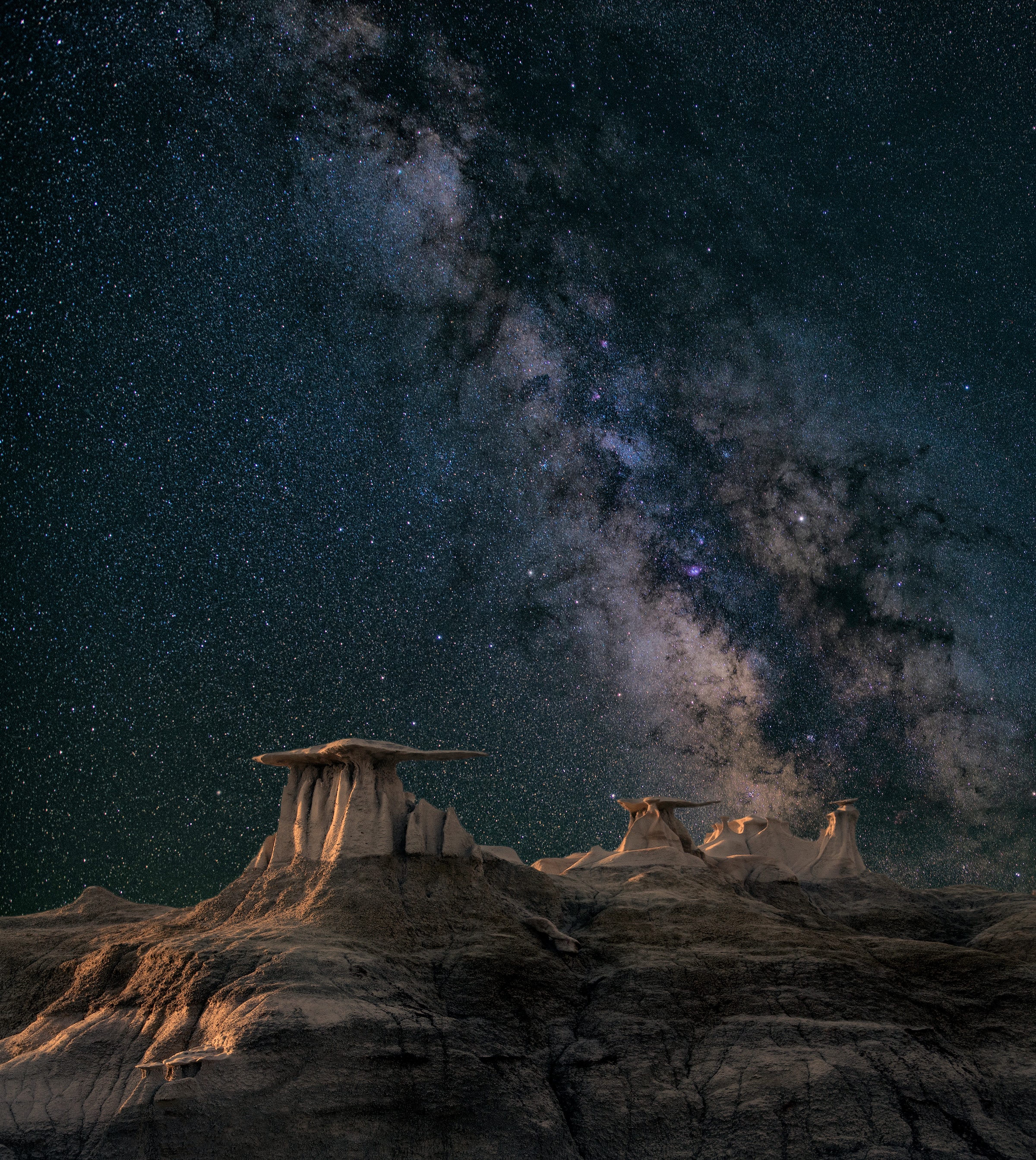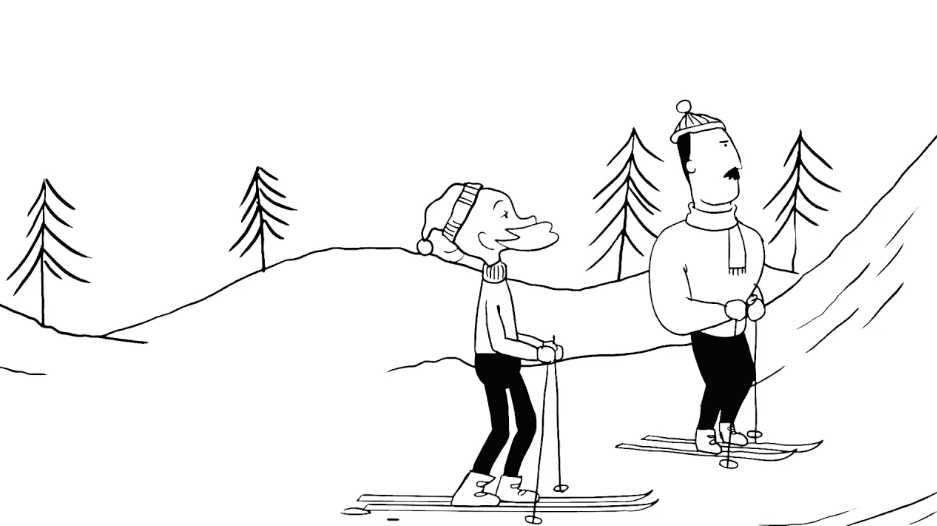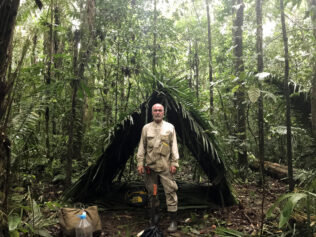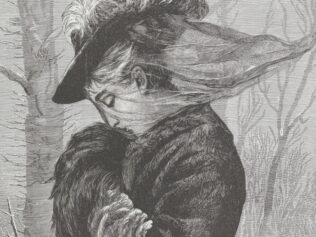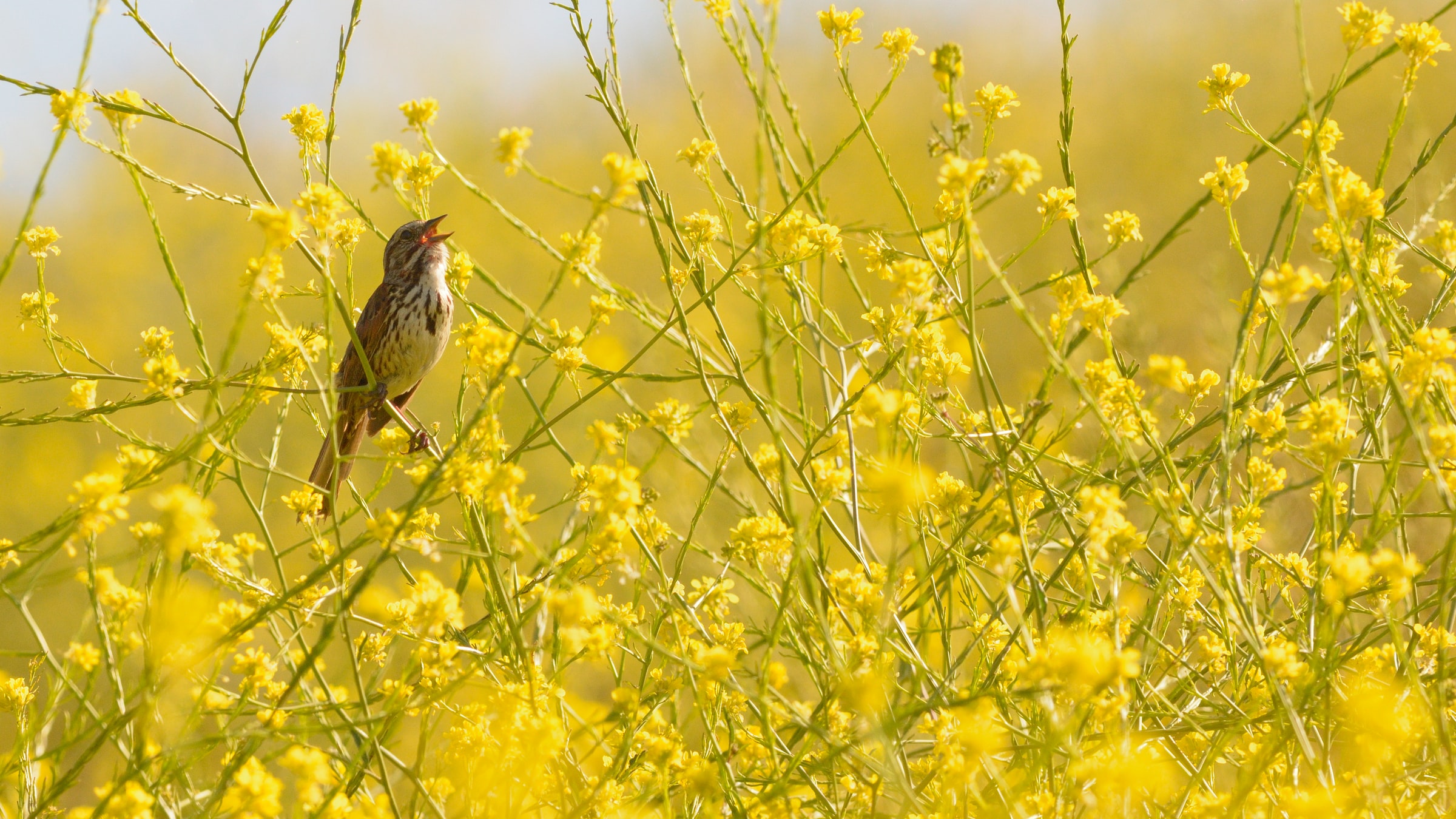
Could there be anything as blissful as the pure sounds of nature? It turns out that there can. Musical compositions inspired by the sounds of nature also bring relief, while simultaneously raising awareness of issues related to climate change.
Choose a tent. Take off your shoes before entering it. Don’t move, listen. “We’re about to serve mint tea” is the instruction for the audience of “Nicht-westliches Hören” (Non-Western Listening) by Peter Ablinger, one of the most eccentric composers of contemporary music. The Austrian composer is known for his fondness of turning musical conventions upside down. In his compositions, he uses the rustling of trees and combines sounds made by toads with the flute. Ablinger gives voice to nature and creates the right conditions to listen to it more carefully. An example is the above-mentioned composition, made a few years ago at a festival in picturesque Rümlingen. For 30 years, this small Swiss town has been hosting an open-air music festival. Every year, the organizers invite various artists who compose works set in the natural environment. Instead of sitting comfortably in armchairs, the audience has to wander in the mountains, often for many hours.
Taking listeners out of concert halls to listen to music in the open air – or, as is particularly popular today, to nature itself – is nothing new. Composers were already doing this many centuries ago. One of the flagship examples is Georg Friedrich Händel’s “Water Music” from 1717. The undisputed Baroque master created a series of three suites in honour of King George I. They were performed for the first time when the ruler of Great Britain and his entourage went along the River Thames to Chelsea. The musicians – about 50 instrumentalists – sailed on a separate boat, playing during the journey to aristocrats, as well as to residents gathered on the shore. The piece must have aroused considerable emotions at the royal court. The composer quickly gained the status of a star and began to perform his music at official ceremonies. The heir to the throne, George II, also noticed the artistry of Händel’s beautiful melodies. More than 30 years after the water piece, the artist wrote “The Music for the Royal Fireworks”. As the name suggests, it is an accompaniment to a fireworks display, and the orchestra primarily includes loud wind instruments, as the sound of the fireworks would have drowned out the ethereal strings.
In the history of music, there are also known examples of works created with respect for living creatures, without the unnecessary bombardment of noise, harmoniously combining the sounds of nature with the sounds of instruments, such as Raymond Murray Schafer’s “Music for Wilderness Lake” from 1979. It is worth pausing for a moment when mentioning this Canadian composer and theoretician. The artist initiated a real revolution in the understanding of the art of sound, coining the useful term ‘soundscape’ – that is, an acoustic environment that includes all of its component sounds, regardless of whether they are natural or generated by machines and humans. Schafer also put forward a thesis that technological development negatively affects the audiosphere that surrounds us from all sides. Modern equipment – radios, megaphones, computers, telephones – pollute the audiosphere with noise. From here, it is only a small step to sound aggression and far-reaching socio-political consequences. The author was thinking here mostly about the radio and its role in the rise of totalitarianism in the 20th century. The remedy? Cleaning the ears – that is, learning to consciously use the organ of hearing.
But let’s get back to the music. Schafer painstakingly translated theory into practice. In his work, he took a liking to lakes, among others, around which and on boats he readily placed musicians. “Music for Wilderness Lake” was written for 12 trombonists located around a body of water, with a conductor placed on the surface of the lake. The work consists of two parts: “Dusk”, to be performed at dusk; and “Dawn”, to be played at dawn. In the parts of the instruments, the composer noted sounds imitating the swoosh of water or the howling of wolves (depending on the time of day and night); crucially, he included instructions for the performers to react to any noises they hear in the area.
Imitating the singing of birds, the sound of insects, of rustling leaves or murmuring streams was and still is popular in the canon of classical music. It works better in concert halls with carefully planned acoustics and comfortable seats, where, for example, strings have the chance to fully resonate. The greatest composers have practised illustrating the surrounding world with the sounds of acoustic instruments, and the direction of their musical thoughts is often suggested by the title itself: “The Symphony No. 6 in F major, Op. 68”, also known as “The Pastoral Symphony”, by Ludwig van Beethoven; “The Four Seasons” by Antonio Vivaldi; “The Trout Quintet” by Franz Schubert; “Flight of the Bumblebee” by Nikolai Rimsky-Korsakov, to name a few of the most famous compositions.
Let’s consider Olivier Messiaen, a 20th-century composer and avid ornithologist who recorded musical material inspired by the singing of birds by writing notes on the stave. His piano concerto “Réveil des Oiseaux” (The Awakening of Birds) is based on the sounds made by these animals in the Jura Mountains. Further in the collection there is, among others, the piano series “Catalogue d’oiseaux” (A Catalogue of Birds) with information written in the score as to which bird was the inspiration at that moment. According to the sources, Messiaen’s interest in ornithology dates back to his youth, when the 20-year-old artist noted, sketched and watched birds through binoculars. He also learned from other researchers, and finally began to recognize more than 50 different species by ear. Recently, an ornithologist carefully analysed the works of the French composer and compared them with the corresponding recordings of birds. It turned out that they correspond with authentic recordings in almost 70% of cases.
What can’t be heard?
Today it is much easier: modern technology allows you to record sounds with great accuracy. The right microphones, recorders, headphones, computers change the perspective of listening (and hearing). This is how the trend of field recording was born (i.e. recording sounds in a given place and at a given time). The recorded section of the audiosphere can then be subjected to numerous analyses and manipulations, to observe the dynamics, rhythm, colours – and to compare what the human ear remembers and how it really sounds out in the environment. An auditory experience mediated through such equipment becomes more intense.
Not only are the sounds of nature recorded, but also the hustle and bustle of the street, shreds of conversations, the pulse of the city. Such sounds have also found their permanent place in the palette of effects of composed music, often accompanying acoustic and digital instruments. There are many strategies for creative integration of recordings with a musical layer; sometimes they run along a parallel path, other times they merge with the sound of the instruments, so that it is impossible to guess the source of the sound. More and more compositions are also created under the influence of reflections on the climate catastrophe. Composers try to use sounds to recreate the connection between human beings and nature. Or on the contrary, they create audiospheres that have long ceased to exist, and this stimulates the imagination like nothing else. At the same time, they show just how much human activity drowns out the natural environment.
Karen Power is one of the artists who combines recordings of soundscapes with the sound of instruments, thereby challenging musicians. The Irish artist is particularly interested in the ways we perceive sound and experience the space in which we find ourselves. Through her compositions, she wants to help the audience assess the condition of auditory memory, recall memories stored in the body, and question whether what we have heard and remember is true. As in the case of Ablinger and Schafer, her work often deviates from the Western European understanding of music. Power looks underwater for material for her songs, most recently in the Arctic and the Irish boglands. This is how “bog songs” was created.
A pioneer in discovering unknown elements using a microphone and the ears is Annea Lockwood. At some point, the composer stopped believing in the possibilities of acoustic instruments, so she switched to electronic music and field recordings. This allowed her to explore a wide range of synthetic sounds recorded on tape. Coincidentally, her search for sound focused on the Hudson River. She was looking for a job in New York and ended up at the Hudson River Museum. Someone from the administration recognized her as an artist and suggested that she take the initiative herself. Thus, in the 1980s, a long-term project of sound cartography of rivers began, for which she is best known today. This time, the starting point for artistic reflection was the question of how carefully we listen and what we hear when we receive acoustic signals. As I listened to the fast current of the Hudson River, the conversations around it, the noises gathered by Lockwood with her microphone, I felt a flow of energy on my skin unknown to me before.
You can also treat instruments unconventionally and present completely new ways of extracting sounds from them. In contemporary music, such a practice is labelled with the term ‘extended technique’. Artists writing for an orchestra or smaller ensembles are in this way looking for new sounds. These techniques are an important component of Kristine Tjøgersen’s artistic language, allowing her to construct ‘natural’ microworlds. Like in “Between Trees”, which is an imaginary forest full of the sounds of squirrels eating nuts, the fluttering wings of blackbirds, drumming woodpeckers, hooting owls – and the pulsating rhythm of roots communicating inexplicably with the crowns of trees. All you have to do is close your eyes. A disturbing darkness illuminated by LED lamps is the beginning of “Bioluminescence”, a piece for an orchestra, inspired by the phenomenon of light production and emission by marine organisms living on the ocean floor, as well as fungi. In this way, Tjøgersen refers to light pollution, which is being increasingly talked about today.
Natural relief
Can nature rendered with sounds or intertwined with music bring relief in turbulent times? This question is also asked by young Polish composers. Kuba Krzewiński recently turned to close contact with nature and creating new, alternative visions of the future in his audio-visual piece Incorporate No. 3. This work combines corporeality with the sounds of nature, and a characteristic gesture is the hand shown in real-time on video, on which a wooden bow moves. This intimate connection between the performer and the instrument also has another dimension: it reminds us that we are made of the same atoms, we come from the same world, even if we forget it for a moment.
Perhaps a way to stop the climate catastrophe is to rebuild the bond with nature not only by listening carefully to it, regularly ‘cleaning the ears’, but also by understanding our own corporeality. Looking at experiences recorded in memory, on the skin, collected through the eyes of the imagination. Looking for points of contact for the restoration of interspecific solidarity. Evoking sensations and emotions. I dare to propose the thesis that if something is to shift, only music can initiate this change.
Translated from the Polish by Agata Masłowska


